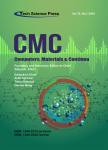Data-Driven Decision-Making for Bank TargetMarketing Using Supervised Learning Classifiers on Imbalanced Big Data
作者机构:School of Computer Science and Informatics De Montfort University Leicester LE1 9BH United Kingdom Faculty of Computer Science and Information Technology Universiti Tun Hussein Onn Malaysia Johor 86400 Malaysia
出 版 物:《Computers, Materials and Continua》 (计算机、材料和连续体(英文))
年 卷 期:2024年第81卷第1期
页 面:1703-1728页
核心收录:
学科分类:08[工学] 0812[工学-计算机科学与技术(可授工学、理学学位)]
基 金:De Montfort University, DMU Kimberlin Library Administration Cyber Technology Institute Universiti Tun Hussein Onn Malaysia, UTHM, (E15216)
主 题:Big data data mining data visualization imbalanced dataset label encoding machine learning sampling techniques
摘 要:Integrating machine learning and data mining is crucial for processing big data and extracting valuable insights to enhance decision-making. However, imbalanced target variables within big data present technical challenges that hinder the performance of supervised learning classifiers on key evaluation metrics, limiting their overall effectiveness. This study presents a comprehensive review of both common and recently developed Supervised Learning Classifiers (SLCs) and evaluates their performance in data-driven decision-making. The evaluation uses various metrics, with a particular focus on the Harmonic Mean Score (F-1 score) on an imbalanced real-world bank target marketing dataset. The findings indicate that grid-search random forest and random-search random forest excel in Precision and area under the curve, while Extreme Gradient Boosting (XGBoost) outperforms other traditional classifiers in terms of F-1 score. Employing oversampling methods to address the imbalanced data shows significant performance improvement in XGBoost, delivering superior results across all metrics, particularly when using the SMOTE variant known as the BorderlineSMOTE2 technique. The study concludes several key factors for effectively addressing the challenges of supervised learning with imbalanced datasets. These factors include the importance of selecting appropriate datasets for training and testing, choosing the right classifiers, employing effective techniques for processing and handling imbalanced datasets, and identifying suitable metrics for performance evaluation. Additionally, factors also entail the utilisation of effective exploratory data analysis in conjunction with visualisation techniques to yield insights conducive to data-driven decision-making. © 2024 The Authors. Published by Tech Science Press.



